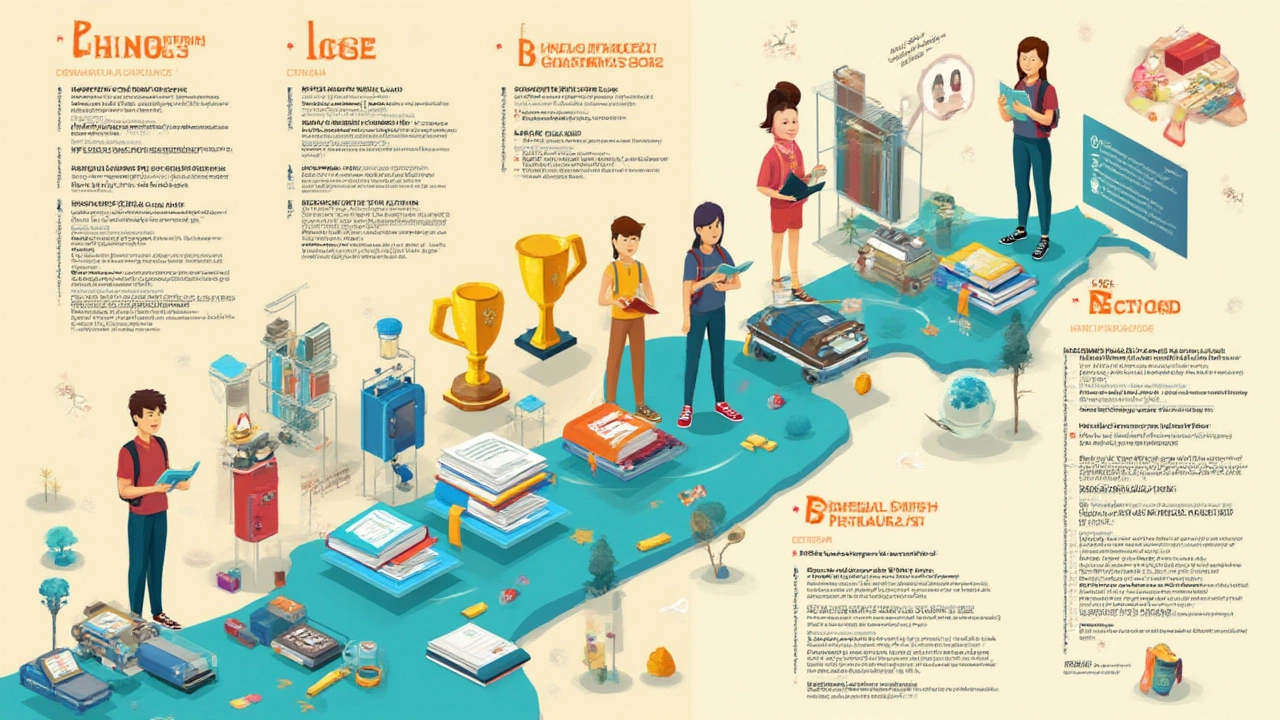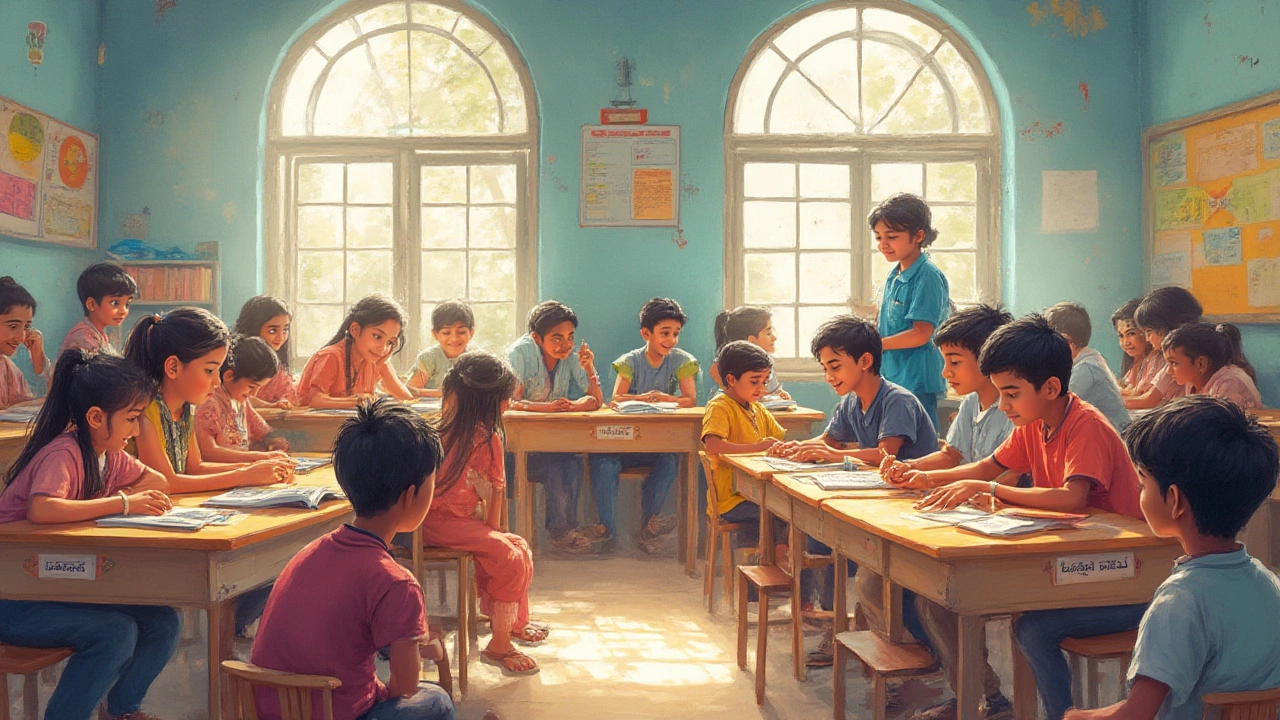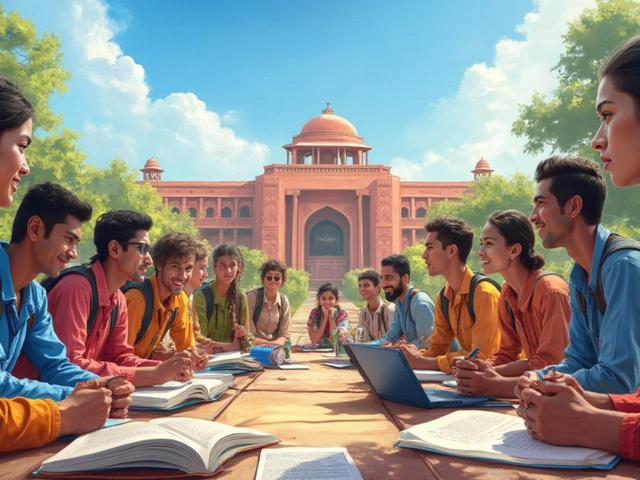Everyone has their own tale about school stress, but ask anyone in India about their board exams and you’ll hear more than just a few horror stories. While some shrug it off like a summer cold, others carry the nightmares into adulthood. But here’s the twist—some students actually find their board surprisingly chill. What’s their secret sauce? Turns out, the answer might be in the board they chose. People always ask: "What is the easiest board in India?" Is it really State Boards, or does CBSE deserve the soft spot? Or is there an overlooked contender?
What Makes a School Board ‘Easy’?
Before we single out the ‘easiest’ board, we’ve got to figure out what even makes a board ‘easy’. Is it the syllabus? The way questions are asked? Or how teachers teach? It’s a mix. Here’s where things get interesting: each board designs its own textbooks, sets its own papers, and trains teachers to focus on different things. Some boards want you to be good at theory, others want you to apply what you learn, while some just want you to finish the textbook and move on.
Back in 2023, a survey by Edurank polled 2500 Indian students and parents on their pick for the least stressful school board. Here were the top factors for what makes a board 'easy':
- Syllabus load: How many chapters? How much to remember?
- Type of questions: Rote memorization or real-life application?
- Exam format: Objective or essay? Rigid or relaxed?
- Support: Available sample papers, coaching centers, study material?
- Flexibility: Tough pass percentage? Grace marks?
Not every school board in India weighs these the same. Now, let’s see how each board stacks up against these points.
The Big Three: CBSE, ICSE, and State Boards Compared
CBSE, ICSE, and State Boards are the Big Three everyone talks about. But that's not where it stops—there's also the NIOS (National Institute of Open Schooling), which is a bit of an outlier. Still, let’s focus on the giants first.
CBSE (Central Board of Secondary Education) is famous for its all-India reach. It was started for the children of government employees—think transferable jobs. Syllabus? Heavily tilted towards science and maths, aligned with national entrance exams like JEE and NEET. Question papers mix objective and theory, with sample papers galore everywhere online. It’s more standardized, so you know what to expect. Yet, many say CBSE isn’t 'easy'—just predictable.
ICSE (Indian Certificate of Secondary Education) is managed by the CISCE. This board offers a broader syllabus with a thumb on English. The course material is in-depth, with more subjects, longer textbooks, and a focus on writing. Students call it “tough but fair.” If you love literature and projects, maybe you’ll love it too. But easy? Most would say that’s not ICSE’s main selling point.
Then there are the State Boards—and here, you get big differences depending on the state. Maharashtra, Tamil Nadu, West Bengal—they all run their own show. Usually, the syllabuses are smaller, textbooks are thinner, and the language is simpler. The marking can be more generous, and the choice of local languages makes things more relaxed for some.
| Board | Difficulty Level (Scale 1-5, 5=most difficult) | Focus | Common Languages |
|---|---|---|---|
| CBSE | 3 | Science, Maths, National Exams | English, Hindi |
| ICSE | 4 | English, Literature, Projects | English |
| State Boards | 2 | Basic Syllabus, Local Relevance | Varies (regional languages) |
| NIOS | 1 | Distance, Flexibility | English, Hindi, Urdu |
As you can see, State Boards often score lower on the ‘difficulty’ scale. But there’s an unexpected competitor: NIOS.

NIOS: The Dark Horse of ‘Easy’ Schooling
The National Institute of Open Schooling (NIOS) is like the cool, independent cousin in the Indian education family. It’s government funded but lets students learn at their pace. No fixed schedule, no heavy rush to finish textbooks within a year. The student can choose subjects, skip the heavy ones, and pick a mix that feels less stressful. Passing marks are less tough (35% in most subjects), and even the exam papers lean more on short answers.
Some practical examples: a student who was struggling with ICSE maths or science switched to NIOS and cleared 12th with ease, focusing only on arts subjects. Others joined NIOS after dropping out, needing a board with flexible schedules and subject options. The biggest plus? No one cares if you’re retaking a subject, as there are multiple tries every year.
NIOS students don’t have as many strict school uniforms or rushed practicals. A few states now even recognize NIOS results for local university entrance, including medical and engineering courses. Just a decade ago, many universities raised eyebrows at NIOS. In 2025, it’s usually accepted across India—just check your dream college first.
Is NIOS always the best option? It works brilliantly for self-starters, or those grappling with tough situations—artists with busy schedules, kids aiming for sports careers, or anyone facing health struggles. It isn’t the right fit if you love that daily school crowd, or thrive under regular homework and fixed teachers.
Real Stories: Student Experiences Across Boards
Numbers are cool, but real stories matter. Sneha, who studied for her board exams in West Bengal, remembers State Board exams as ‘a piece of cake’ compared to her cousin slogging through CBSE sample papers. Akash, who moved from a UP State Board to CBSE in Delhi, says he had to work “double hard” to catch up in maths and science. Priya, who took NIOS after a year of medical leave, felt the pressure lift. She cleared 12th with a good score and pivoted to a diploma in interior design, skipping heavy math and physics entirely.
What stands out in their stories? First, the board’s official textbooks matter a ton. State Boards’ books are slim, straight to the point, and don’t pile on extra ‘reference reading’. CBSE books are thicker but have clearer guidance on what’s likely to be asked. ICSE? Huge books, don't look ahead if you’re easily intimidated.
Support at home also plays a big role. Where coaching centers for CBSE and ICSE are everywhere in metros, State Board students, especially in rural areas, rely mostly on their school teachers—who might give hints about the best chapters to leave out before exams. You’ll hear stories of State Board teachers even leaking 'likely questions' days before. It’s not official, but it happens.
Finally, there’s the marking style. Some State Boards hand out marks liberally if you stick to the ‘model answer’, while ICSE graders want original wording. That’s why parents keen on an “easier” ride, especially for board results used just for local college entry, aim for the State Boards or NIOS.

How to Pick the Right Board for Ease and Ambition
So, if you’re only looking for a board with less stress and an easier time, State Boards and NIOS are top picks. But you’ve got to factor in your end goal—local colleges, national entrance tests, studying abroad? For national-level tests and competitive coaching, CBSE still dominates in numbers, and study material is everywhere. ICSE sharpens English and writing skills, which is awesome for those aiming abroad or in creative fields.
Here are some street-smart tips to make your life easier, whichever board you pick:
- Talk to ex-students. They know the real tricks—what to skip, what to focus on.
- Don’t just go by the reputation—read the actual textbooks or sample papers.
- Check if the board choice makes it easier (or tougher) to get into your preferred college or degree.
- If you struggle with languages, see which boards let you take exams in your mother tongue.
- If you’re switching boards, do it sooner than later. The jump gets tougher after Class 8 or 9.
- Check pass rates for the last few years—State Boards like Tamil Nadu average 90%+ in many years, while CBSE hovers around 80%.
Most people find life easier when they play to their strengths. If you need a flexible, low-pressure board, NIOS is a great hack. If your dream is IIT, AIIMS, or top universities, a bit more effort with CBSE or ICSE can pay off. And if you want local college admissions, a State Board certificate almost always does the trick—with less sweat.





